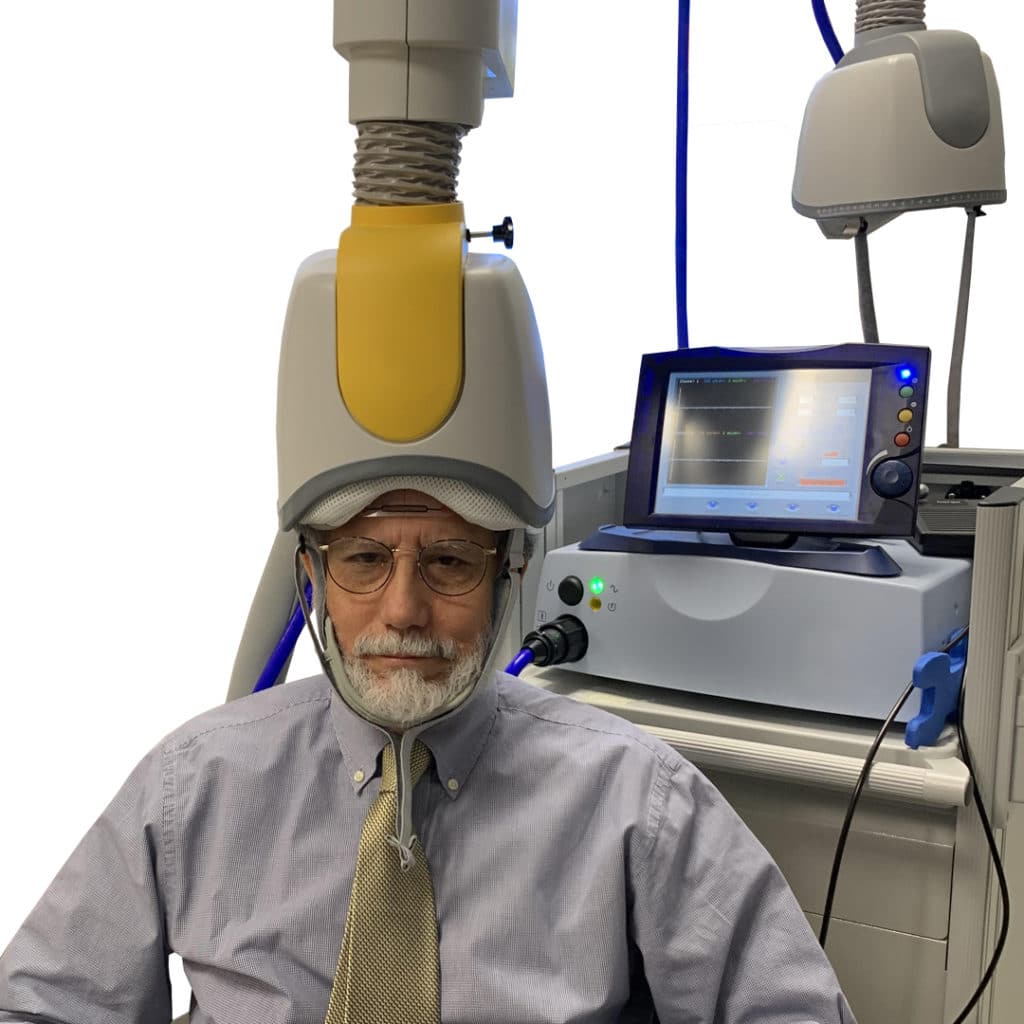Using Transcranial Magnetic Stimulation to Treat Substance Use Disorders

For generations now, researchers have traced the route of addiction through the brain in search of the circuitry that controls the all-consuming desire. Studies have identified affected regions of the brain, such as the amygdala and the prefrontal cortex. Finally, research is shifting from discovery to manipulation. Can the human brain be weaned off addiction?
That is the goal of the Steele Lab at the Yale School of Medicine: “to bridge the translational gap between neuroimaging research and treatment of [substance use disorders].” The lab uses functional magnetic resonance imaging (fMRI) scans of patients to identify the circuits to be targeted, and transcranial magnetic stimulation (TMS) to modulate those circuits.
The head of the lab is Dr. Vaughn R. Steele, assistant professor of psychiatry at the Yale School of Medicine. Dr. Steele’s research focuses on treatments for substance use disorders (SUDs). Dr. Steele spent five years at the Mind Research Network in Albuquerque, New Mexico, and five years at the National Institute on Drug Abuse (NIDA), before joining the faculty at Yale.
This summer, Dr. Steele has a major trial underway on the use of TMS in the treatment of alcohol use disorder (AUD) and opioid use disorder (OUD). The trial involves 40 patients from a Middletown, Connecticut, addiction treatment facility. Patients were recruited immediately after detox at the beginning of treatment.
Patients receive TMS during three months of inpatient residential addiction treatment. TMS focuses electromagnetic impulses to stimulate specific areas of the brain. It’s a non-invasive procedure that has proven to work well in the treatment of nicotine use disorder and such psychiatric disorders as schizophrenia, depression, and traumatic brain injury (TBI).
The trial is pretty demanding, with two sessions a day, five days a week. Some sessions are two minutes long, others are 10 minutes long. The pulses are switched on for a few seconds, then switched off for a few seconds, repeatedly during each session. Dr. Steele describes the process:
TMS coils are placed on the forehead and on the side of the head to target different regions of the brain.
After completion of treatment, patients will be monitored for the frequency and amount of any drug use, along with completing assessments of cravings. In an interview with Futurity, Dr. Steele reports that he has had previous success treating cocaine addiction with TMS. There is no drug approved for the treatment of cocaine addiction. The current trial does not include anyone with cocaine use disorder, only AUD and OUD.
Dr. Steele believes the TMS impacts both reward and restraint. It stimulates receptors in the brain that diminish enthusiasm for the substance or behavior, and at the same time strengthens the ability to resist the cravings that come from withdrawal.
IEEE Spectrum notes that TMS can be prescribed for off-label treatment for addiction in those countries where it has been approved for smoking cessation, including Europe, India, the U.K., and the U.S. However, treatment is not covered by most insurance providers. A full course of TMS can run $15,000, according to IEEE Spectrum.
There is little doubt that TMS works to immediately curb cravings during withdrawal. The big question is, does it last? IEEE Spectrum interviewed neuroscientist Dr. Tony George at the Centre for Addiction & Mental Health at the University of Toronto, who says the TMS effect wears off over time:
It’s pretty much a short-term effect. Invariably, once the stimulation goes, the craving comes back very quickly. So we have to find a way to piggyback brain stimulation on top of more enduring treatments like cognitive behavioral therapy or medications.
That means we might not be able to eliminate cravings with TMS, but we can stun them to sleep during the initial three months of addiction treatment. That buys time to make lifestyle changes to help keep the urges at bay once the TMS wears off. Thanks to the Steele Lab, we might learn what dosages work best by the end of this year.
Written by Steve O’Keefe. First published August 14, 2025.
Sources:
“Can brain stimulation end addiction?,” Futurity, August 5, 2025.
“Can Neural Stimulation Zap Addiction?,” IEEE Spectrum, July 11, 2023.
Image courtesy of Wikimedia Commons, used under Creative Commons license.




